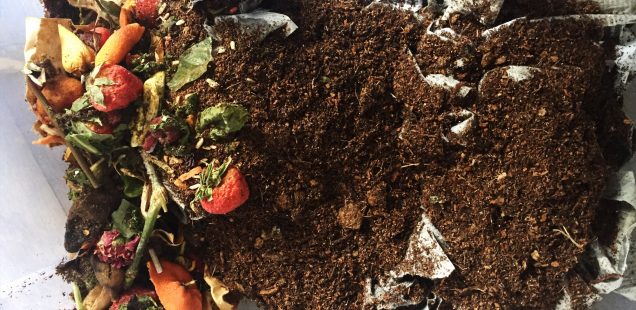
ASHLEY KUENNEKE’S Everyday Activism Challenge
By Ashley Kuenneke, CCAR Program Coordinator (NYC)
For this year’s #EverydayActivismChallenge, I decided to reduce my food waste by starting my own vermicompost (worm) bin in my apartment. Roughly 40% of all produce in the U.S. is thrown away, and about 20% of the waste stream in NYC is made up of food waste that produces methane when sent to landfill (NRDC). I set up my bin 3 weeks ago, and so far my lil’ worm friends are still alive and thriving – with a few important lessons learned on my end!
I bought a pre-drilled bin and a pound of red wriggler worms from the Lower East Side Ecology Center, although it’s very possible to make your own bin. I liked the screens and vents that came with this one, since I was worried about roaches and other bugs getting in.
It only took a few days to realize that the food scraps in this photo were way too much and too large for new worms! They got moldy and my worms were pretty unhappy (balled up in the corner) until I took most of the scraps back out. Since then, I’ve added little bits of chopped food scraps at a time, always covered in moistened strips of newspaper. It doesn’t smell at all when the bin is closed, and the smell when it’s open isn’t strong either (unless something’s gone wrong!).
Carrying a jar or container with me and opting for mostly vegan foods has made it possible to collect scraps even when I’m out, then bring them back to compost. I usually cut up the food scraps, put them in the freezer, then add them to the bin when it’s time (about once per week). Check out the FAQ below for more information on what you can and can’t add to the compost!
Once they’re happy and established, the worms will be able to eat up to around 1/2lb of food scraps per day, and any extra food scraps – which I keep in a paper bag in my freezer – will go to a GrowNYC Food Scrap Drop-off site.
So far, maintaining the bin has been lower maintenance than I expected. I check on the worms about once a day, and add more damp newspaper scraps or mist the bin with a few sprays of water if it looks like the paper in the bin is starting to dry out. Otherwise, the worms have been pretty self-sustaining, and they’re a great way to use up extra food scraps and avoid contributing to greenhouse gasses in our atmosphere!
FAQ: Can I compost this in a worm bin? |
|
|---|---|
Yes:
|
No:
|
And a few resources:
- “Worms Eat My Garbage” by Mary Appelhof
- Booklet on worm bins from the NYC Compost Project
- The Spruce series on home composting
- Nebraska Extension in Lancaster County Vermicomposting Site
It’s not too late to take on your own #EverydayActivismChallenge! Learn more here, and take the pledge at http://bit.ly/BETHECHANGE18!






